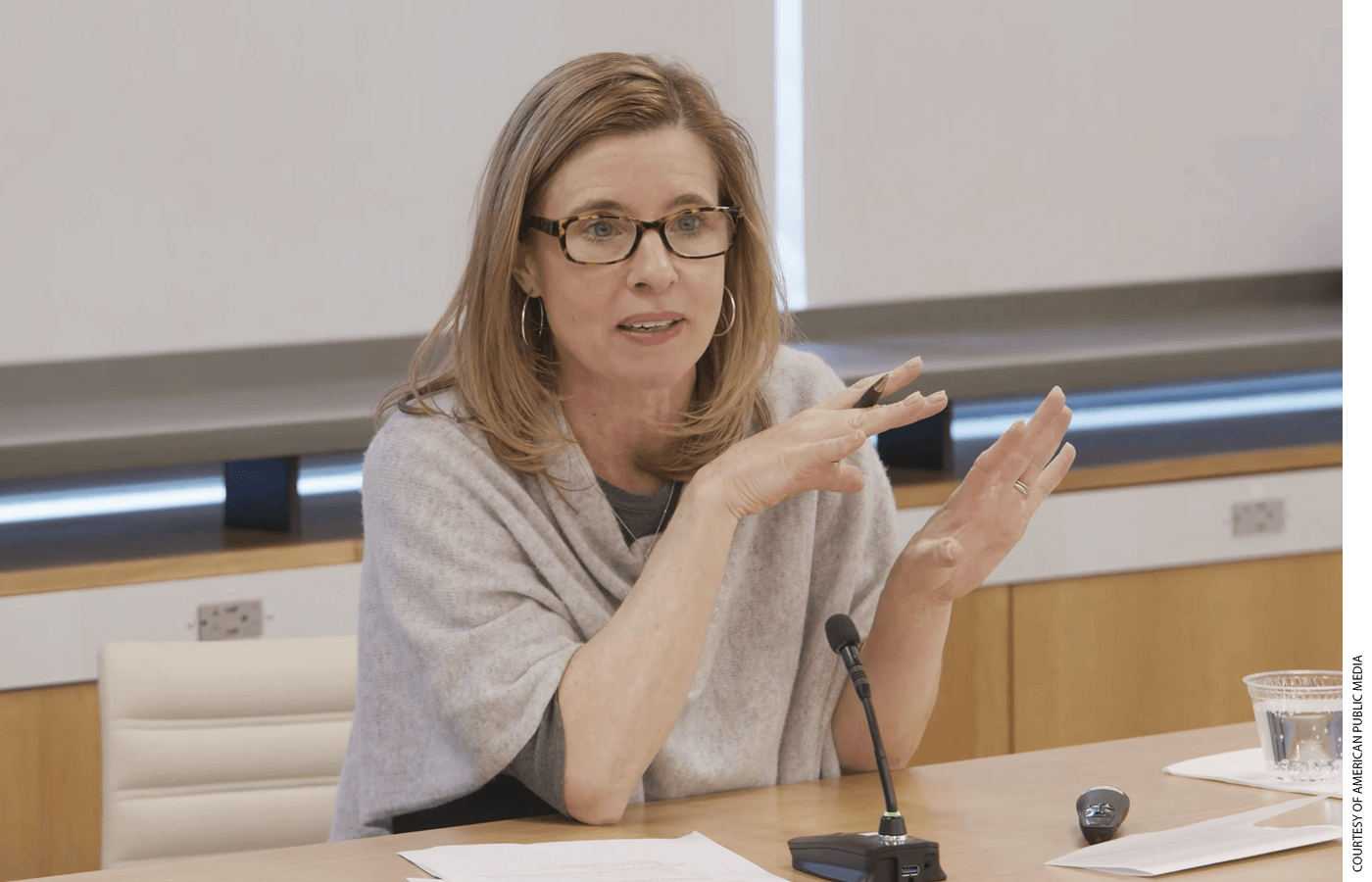
Reporters love to tell “how I got that story” stories about landing an exclusive interview or being in the right place when news happens. American Public Media’s Emily Hanford, though, is hard-pressed to identify a specific moment or event that set in motion her project of the last several years—a high-profile series of radio documentaries and reports on how America’s public schools teach kids to read. Collectively, these efforts amount to the most significant body of work produced by an education journalist in the last few decades. The effects of Hanford’s reporting are undeniable: shifts in classroom practice, countless school-district curriculum adoptions, and legislation in nearly every state in the country aimed at advancing instruction grounded in “the science of reading.”
Hanford’s job afforded her an opportunity rare among education journalists: hours of time to spend in schools observing teachers and students. “I spent a whole lot of years in a lot of classrooms,” she recalls. “I would just put a microphone on a kid or a teacher and follow them throughout the day. When you make documentaries, you put in all these hours of just trying to see something unfold in search of a scene or a moment that illustrates a point.”
Hanford describes many of her early efforts as “low-impact,” but over time those hours of following kids and teachers around prompted her to reflect on what they were actually accomplishing. “I feel like I went to school from 2008 to 2018, and in the back of my mind I was always thinking, ‘What are the kids really learning here?’”
A report on remedial education in college brought her in contact with students who, by their own admission, couldn’t read or write very well, which made Hanford curious how it was possible to get so far in school lacking in such basic skills. “It’s not as if they didn’t deserve to be there,” she explains. “It was pretty clear to me from talking to them and their instructors that they were bright people.” If there was an aha moment that launched her investigation into reading, it was interviewing one such student who told Hanford about her dyslexia. Subsequent conversations with researchers and advocates in the dyslexia community opened Hanford’s eyes to “a huge body of cognitive-science research on reading and how it works. It helped me understand that those kids’ troubles were connected to something larger that was affecting all kids,” she recalls. Dyslexic kids “are the most screwed when there’s not good instruction, but a whole lot of kids get screwed.”
In 2018, Hanford traveled to Bethlehem, Pennsylvania, to report on a school district that seemed to have cracked the code on reading instruction. From 2015 to 2018, the percentage of kindergarteners at or above the DIBELS (Dynamic Indicators of Basic Early Literacy Skills) benchmark reading score soared to 84 percent from 47 percent. The explanation? Bethlehem Area School District administrators had begun training teachers to teach reading in a completely different, research-backed way. The report and podcast that came of this, Hard Words, made waves around the education world and beyond, winning the Education Writers Association’s inaugural Public Service Award. Since then, Hanford has continued her crusade, finding school after school where kids have been harmed by poor curriculum and instruction and fundamental misunderstandings about reading and how to teach it.
Hanford is a rarity in education reporting, in that her work focuses almost exclusively on classroom practice rather than education policy, politics, or personality stories. With this specialty, she has struck a rich vein of ore and, perhaps unwittingly, written a playbook for other education journalists. At the very least, her methods and focus raise an intriguing question: are there similar stories waiting for enterprising education journalists to pick up and run with the way Emily Hanford has done with the science of reading?
Hiding in Plain Sight
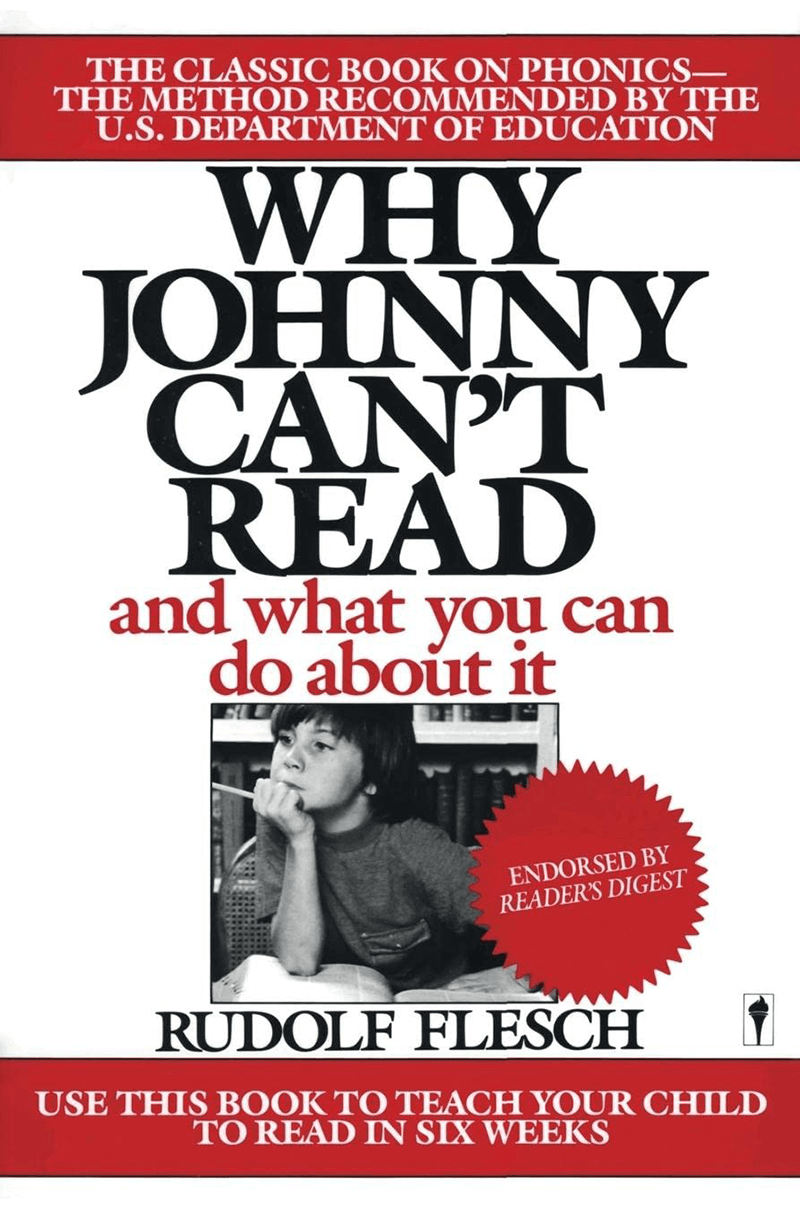
In no way does it minimize Hanford’s effort or impact to observe that, from the perspective of reading researchers and literacy experts, her work wasn’t news per se. America’s “reading wars” have been waged longer than most of their current combatants have been alive. In 1955, Why Johnny Can’t Read–And What You Can Do About It by Rudolf Flesch brought attention to the insufficient “look-say” method of “Dick and Jane” readers. A Nation at Risk reported in 1983 that “some 23 million American adults are functionally illiterate by the simplest tests of everyday reading, writing, and comprehension.” More recently, the National Reading Panel’s 2000 report “Teaching Children to Read” martialed explicit evidence that systematic phonics instruction is more effective at teaching kids to read than instruction that does not include phonics.
Nor was every education journalist asleep at the switch. In 2007, Education Next published Barbara Feinberg’s withering assessment of the Teachers College Reading and Writing Project and its founding guru, Lucy Calkins (see “The Lucy Calkins Project,” features, Summer 2007). Ten years ago, Alexander Nazaryan, a former teacher, penned a New York Times op-ed titled “The Fallacy of ‘Balanced Literacy.’” Sol Stern of the Manhattan Institute wrote dozens of articles and op-eds as far back as 1997 criticizing unsound literacy instruction in New York City schools and championing the work of E. D. Hirsch Jr. In 2014, Tim Shanahan, Distinguished Professor Emeritus of Education at the University of Illinois Chicago, wrote an authoritative takedown of leveled reading, pointing out that there was virtually no evidence supporting it. “I don’t believe that these experts have intentionally misled teachers,” he wrote, “but that they were so sure they were right that they misled themselves.” Hanford says she read all of these “hugely helpful” articles while developing her work; another inspiration she cites is the 2017 book Language at the Speed of Sight by Mark Seidenberg, retired professor of psychology at the University of Wisconsin Madison.
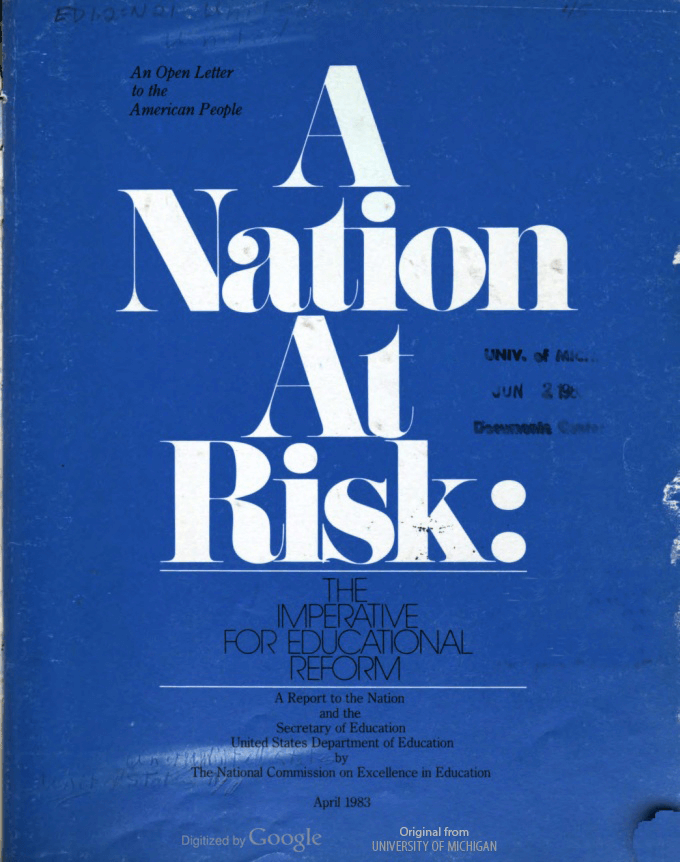
Hanford’s achievement, then, was not in discovering the weaknesses in popular approaches to teaching reading but in making their flaws accessible to lay readers and listeners—getting them invested by humanizing the story, quantifying the cost to students of subpar instruction, and explaining in vivid detail the intersecting impulses and interests that made it possible for reading instruction to go so wrong for so long. But even this doesn’t fully account for the galvanizing effect of her podcasts Hard Words (2018) and Sold a Story (2022). When studying schools from afar, it’s easy to view bad reading scores as the fault of bad teachers. If you increase spending on teacher training, and the improvement is still not there, then there’s even more blame to unload on them. Decades of education reform and associated media coverage largely accepted this judgment. But Hanford’s reporting flipped this assumption on its head, creating a permission structure for teachers to be seen (and, critically, to see themselves) as unwitting victims of poor training and inadequate curricula—not the indifferent, incompetent, or union-protected layabouts of common caricature, reluctant to change and unmoved by low reading levels or achievement gaps between groups of students. This flipped perspective helped catapult Hanford into the limelight. Sold a Story was the second-most shared show on Apple podcasts in 2023. It earned an Edward R. Murrow award, an Alfred I. duPont-Columbia award, and a nomination for the Peabody, among the oldest and most prestigious awards in broadcasting.
Indeed, the contrast between Hanford’s framing and major-media coverage of education over the past two decades helps explain how her work broke through where earlier, similar efforts failed. Recall that in 2008, TIME magazine put Michelle Rhee on its cover holding a broom, symbolizing her intention to “sweep” bad teachers out of classrooms in Washington, D.C., the school district she ran as chancellor. Rival magazine Newsweek was even less nuanced. Its 2010 cover story blithely asserted that the key to saving American education was simply (and simplistically) “we must fire bad teachers.” These high-profile pieces of education journalism tacitly assumed that teachers knew what to do and that poor results represented incompetence or failures of will.
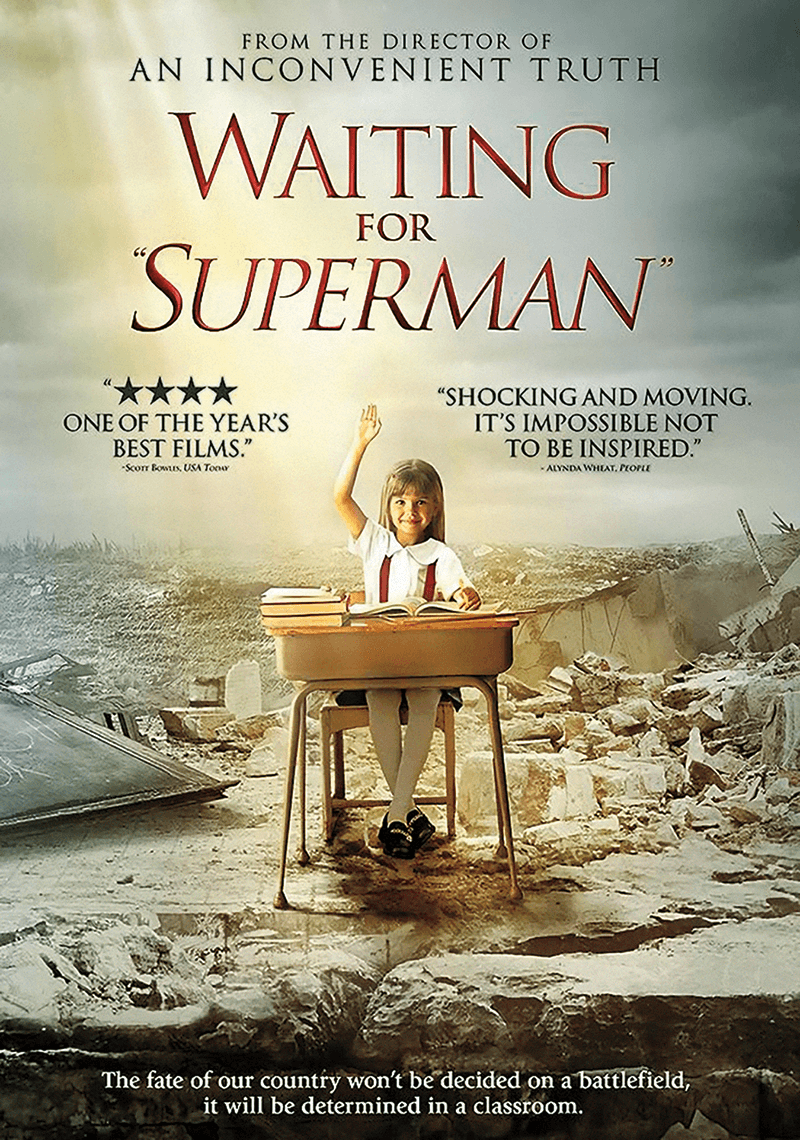
Those assumptions were also baked into test-based accountability policies and largely unquestioned in the media reports and documentaries like Waiting For Superman that marked the No Child Left Behind era: show me bad student outcomes and I’ll show you bad teaching. In Hanford’s telling, teachers are less the sinners than those sinned against—literally “sold a story” by schools of education, commercial publishers, and a rogues’ gallery of self-interested gurus including Calkins, Marie Clay, and Irene Fountas and Gay Su Pinnell, among others. The Bethlehem school district adopted the motto “When we know better, we do better” as an acknowledgement of past mistakes and a commitment to future students. Hanford showed that teachers cannot be held solely accountable for decades’ worth of false and largely unquestioned premises embedded in so-called best practices and functionally enshrined in education policy. Vindication for the misplaced blame was evident in teachers’ responses to Sold a Story—Ariela Young, a teacher from Florida, wrote to Hanford and said, “As I was listening, I kept saying—oh my goodness, this is me! I am angry! I am frustrated! I hope to pass on the knowledge I have gained to my fellow teachers and to keep looking forward.” The contrast with two decades of finger-wagging at teachers for poor performance can hardly be overstated.
If the measure of education journalism is its influence on classroom practice and public policy—and other journalists—Hanford’s impact is unmatched. As improbable as it may sound, the minutiae of reading instruction have become national news. In August of 2022, TIME published Belinda Luscombe’s “Inside the Massive Effort to Change the Way Kids Are Taught to Read.” A couple of weeks later, The New Yorker weighed in with “The Rise and Fall of Vibes-Based Literacy,” effectively mocking the ineffective “cueing” strategies at the heart of the failed instructional practices that had supplanted phonics-based lessons in elementary schools. In April 2023, after Sold a Story was released to critical praise, the New York Times chimed in with a piece called “‘Kids Can’t Read’: The Revolt That Is Taking On the Education Establishment.” Other prominent outlets to cover the issue include PBS (“Why More U.S. Schools Are Embracing a New ‘Science of Reading’”); New York Magazine (“Did New York City Forget How to Teach Children to Read?”); and Slate (“The Decades-Long Travesty That Made Millions of Americans Mistrust Their Kids’ Schools”).
The impact on public policy has been even more pronounced. In July 2023, the Shanker Institute published a report titled “Reading Reform Across America,” which tracked evidence-based and science-of-reading-based legislation from 2019 to 2022, overlaying neatly on the years in which media coverage of the science of reading reached its zenith. The report found 272 bills containing the word “phonics,” 146 containing the word “evidence,” and 40 containing the phrase “science of reading.” Legislation aimed at changing classroom practice spanned 45 states and the District of Columbia—all in the years following Hanford’s Hard Words. Shanahan describes a “Hanford effect,” which has transformed the way we talk about reading. “I looked up the term ‘science of reading’ in LexisNexis over a period of years,” he said. “In a typical year during the 2000s it came up about 4 times a year. Then Emily posted her first documentary that used the term and voila, it was showing up about 150 times!”
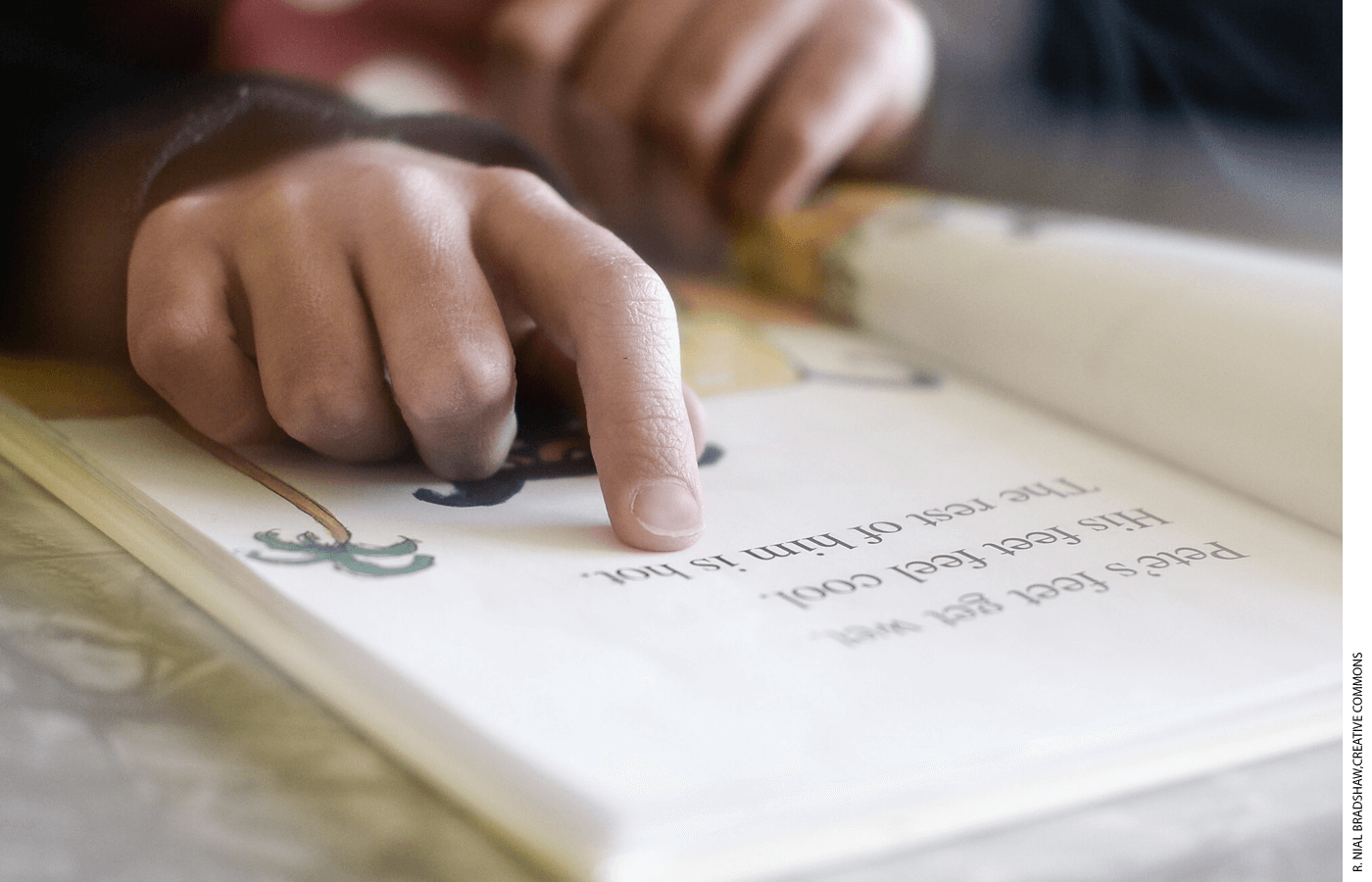
Finding the Next Sold a Story
The impact of Hanford’s exploration of reading instruction invites a thought exercise: if the weaknesses of common literacy curriculum and instruction have been known for decades to education researchers, dyslexia advocates, and some number of practitioners—and if those weaknesses have been waiting for effective public-service journalism to break through and galvanize a public-policy response and drive changes in classroom practice—are there other facets of classroom practice ripe for the same treatment?
Let’s consider the conditions and characteristics that enabled Hanford to devote the time and energy necessary to produce her body of work. Again, her job as a documentary journalist means producing “long lead” work with many hours of unstructured observation time in K–12 classrooms—an advantage few daily print or broadcast reporters can match in the face of daily deadlines. “I have the kind of job where I can read like crazy and dig into research,” Hanford adds. “And I tend to be a pretty fast reader.”
Education reporters rarely enjoy that kind of unfettered access to classrooms, and even when they do, they often lack the experience to be shrewd judges of teaching and learning. This almost certainly explains why so much education reporting tends to focus on policy, politics, and out-of-school issues, which can be produced with little or no classroom time or experience. A review of the Education Writers Association’s annual Fred M. Hechinger Grand Prize for Distinguished Education Reporting gives an idea of the type of reporting currently in favor and most likely to garner attention. The most recent winner, “The Price Kids Pay” by Jodi S. Cohen and Jennifer Smith Richards of ProPublica and the Chicago Tribune, was a series of pieces on Illinois police ticketing students for classroom misbehavior. Other recent winners include “How Missouri became a safe haven for faith-based boarding schools” by Laura Bauer and Judy Thomas of the Kansas City Star, and “Racism at the Virginia Military Institute” by the Washington Post’s Ian Shapira. Jacques Steinberg’s New York Times series on 3rd-grade reading, titled “Room 3-223,” was the most recent Hechinger prize–winning piece covering curriculum and instruction. It was published in 1997. The relative glamour and accessibility of political hot topics and policy fights in education has taken center stage, while the arguably more consequential business of curriculum and instruction remains under-covered and largely undiscussed. Hanford’s work revealed the scope and scale of these types of issues when they go ignored for decades. For reporters inclined to dig further into them, the door is wide open.
If hiding-in-plain-sight pedagogical issues spark the interest of ed journalists, then those journalists will need the kind of support that Hanford received, particularly in time and funding. Fellowships offered by universities and foundations can afford journalists the resources required for high-impact investigative reporting like Hanford’s—but, like recent Hechinger Prize winners, many of these fellowships are more likely to invest in politics and policy controversies than in-depth coverage of classroom practice. Though the Spencer Foundation’s “large” research fellowships in education reporting purport to “span a wide range of topics and disciplines,” five of the seven most recent awardees are centered on identity or inequality. Only two of the eleven recipients in the Education Writers Association’s 17th class of reporting fellowships focused on curriculum adequacy. Sparking change in instructional practice requires deep engagement and thorough attention to research. The success of Sold a Story should lead fellowship judges and philanthropists to support education journalism that seeks the classroom access Hanford enjoyed and the discerning eye she developed.
Reporters looking to follow this playbook must also be prepared to defend their work against sometimes strident criticism from “experts.” Critics have complained that Hanford’s reporting, and the burgeoning interest in the science of reading it helped trigger, risk creating the perception that phonics instruction alone is the key to raising strong readers. Her reports “do not provide a comprehensive examination of all aspects of a reading program,” observed Tim Shanahan, “but I don’t think we should expect them to do so, and I don’t accept that her identification of this problem prevents anyone from teaching other essential aspects of reading.”
The most obvious next act for education journalism is a deep-dive into reading comprehension, how it is taught and tested. Enterprising reporters will find a rich irony here: if decoding (phonics) is a skill that’s been insufficiently taught, reading comprehension isn’t a skill at all. Yet generations of educators have been trained to teach it like one, relying too heavily on instruction in reading strategies that ostensibly can be applied to any text. A walk-through of elementary school classrooms will often reveal posters encouraging children to make predictions and inferences, visualize what they’re reading, and employ tips and tricks like “determine the author’s purpose” or “make connections” by relating a text to their lives, other texts, or the world around them. Such displays hint at a mistaken belief that comprehension is a transferable skill like riding a bike: once you learn to pedal and balance, you can ride virtually any bike. Reading comprehension is much more complicated, heavily dependent on students’ vocabulary and background knowledge specific to a text—a reality that schools often neglect. (Doug Lemov, author of Teach Like a Champion 3.0, begins to scratch that reading-comprehension itch in his article “Why Are Books Disappearing from English and Reading Classrooms?” features, Summer 2024.)
The nature of reading comprehension implies the need for a school curriculum that is rich in vocabulary and that valorizes knowledge-building across a wide variety of subjects, using a wealth of challenging texts. If education journalists were to probe, they might find surprisingly little attention given to curriculum and a near-reckless indifference to ensuring a student experience that is coherent and cumulative—an experience that builds knowledge and skills within and between grades. Contrary to popular belief that public school curriculum is top-down and aggressively monitored, nearly all U.S. teachers—99 percent of elementary teachers; 96 percent in secondary school—draw upon “materials I developed and/or selected myself” in teaching English language arts. And unfortunately, these supplementary materials have been shown, more often than not, to be of questionable quality, low rigor, and unlikely to build content knowledge.
Reporters who view education through a social-justice lens might find their base assumptions being challenged as they dig deeply into a topic such as reading comprehension. Fashionable thought and practice dictate that school curriculum should reflect students’ cultures and prior experiences. However, this well-intended impulse might do more harm than good if it limits access to the language, contexts, and background knowledge that literate speakers and writers assume their readers possess: historical and literary allusions, cultural references, and idiomatic language. As E. D. Hirsch Jr. has argued, “public education has no more right to continue to foster segregated knowledge than it has to foster segregated schools.”
Doug Lemov is currently at work on a book on “the science of reading post-phonics.” He cites “the overwhelming importance of fluency” as a subject that deserves closer scrutiny. When students are not fluent readers, they read less, and when they do read, their working memory is devoted mainly to figuring out what the words say, not what they mean. Lemov, who has visited thousands of classrooms in his career, also cites the role of attention in reading and learning as a topic that’s ripe for investigation. “Reading is an act of managing your own attention and sustaining a state of concentration,” he said. Quiet is essential to thinking and learning, “but we almost build schools to be distraction machines,” he observed. “It’s almost like we’re oblivious to the research.”
The greatest lesson from Hanford’s reporting, and the thing that made Hard Words and Sold a Story at once gripping storytelling and impactful journalism, is more subtle yet more easily replicable by education journalists across all media. To put it bluntly, the critical theme was the failure of experts. Indeed, the “villains” of Hanford’s exposés were the experts. Lucy Calkins was a professor at Columbia University’s Teachers College. Irene Fountas is on the faculty of Lesley University. Gay Su Pinnell is an emerita professor at Ohio State. For reporters, skepticism is a virtue. When it comes to covering the classroom, it’s essential. But effective investigative reporting will require journalists to cultivate a wider network of sources, including parents, advocates, and researchers—particularly cognitive scientists and others who study learning—rather than reflexively deferring to credentialed experts in education whose thumbprints are all over failed pedagogies and curriculum.
Emily Hanford’s stellar work has made it clear that uncovering misconceptions embedded in common classroom practices is fertile ground for education reporters to work, but it’s unlikely reporters can mount such an effort on their own. News outlets must see this kind of work as valuable and support it accordingly. Philanthropists and support organizations must recognize that journalistic probes of what happens in the classroom have greater impact than the personality and politics stories that the media currently tends to favor. And above all, education reporters need to make it their business to study the ins and outs of teaching and learning and go deeper than covering school board meetings and budgets. There is so much for children to gain through the sustained and enterprising efforts of journalists.
Robert Pondiscio is a senior fellow at the American Enterprise Institute and author of How the Other Half Learns (Avery, 2019). Riley Fletcher is a research assistant at the American Enterprise Institute.
This article appeared in the Summer 2024 issue of Education Next. Suggested citation format:
Pondiscio, R., and Fletcher, R. (2024). How to Be the Next Emily Hanford: Journalism has driven a generational shift in how reading is taught. Similar stories are waiting to be told. Education Next, 24(3), 14-21.
For more, please see “The Top 20 Education Next Articles of 2024.”


